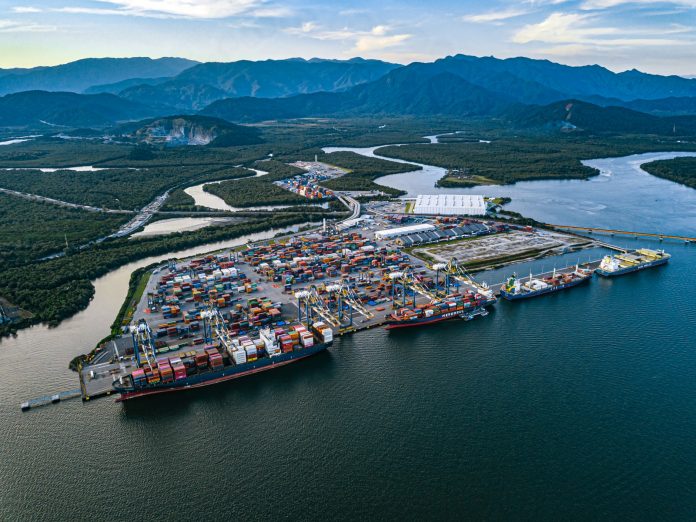Mainline operators are turning their attention to the Far East-Africa and Far East-South America routes as demand wanes on the major East-West trades, according to Alphaliner.
During the Covid-19 pandemic, carriers shifted capacity to the big East West trades to take advantage of the sky high freight rates for export cargo from the Far East to North America and Europe. This resulted in a capacity reduction on some North South routes.
As the liner shipping sector has normalised and rates are under pressure on the main routes, mainline operators have cascaded excess Neo-Panamax ships to the North-South routes.
Alphaliner figures show a 4.5% year-on-year capacity reduction on the Transpacific, and substantial capacity increase for services to/from South America (+17.5%) and Africa (+21.1%). Almost 243,000 TEUs have been cut from the Transpacific trades since November 2022, reducing the share of this route in terms of global fleet deployment from 20.9% to 18.5%.
A further reduction is expected as the members of THE Alliance have just temporarily closed the Asia – US East Coast ‘EC4’ loop in which twelve neo-panamax ships of 13,500 – 14,200 TEUs are deployed. Meanwhile, the overall container fleet capacity trading to, from and within South America has increased by almost 562,000 TEUs over the past year.
As ZIM Line just launched a new ZAT service between Asia and the West Coast of South America, 11 more panamax ships, each of around 4,250 TEUs, are also set to join this trade.
The fleet deployed in Africa-related liner services is up 354,000 TEUs compared to last year. Further growth is guaranteed as from December, Maersk and CMA CGM are shifting 13 neo-panamax vessels of 13,100 to 13,900 TEUs to a joint Far East–West Africa service.
The new loop combines two services with a total of 26 ships of 4,250 to 7,100 TEUs each. These ships will be redeployed elsewhere. This fleet swap, however, still represents a 17% capacity growth for this specific service.
Africa’s emerging market has resulted in growing container traffic, in contrast to weakening volumes on the East-West routes. Container Trade Statistics that in 2023 to date, Asia-Africa trade has climbed 20% year-on-year.
Martina Li
Asia Correspondent







